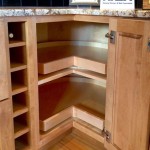Outdoor Kitchen Sink Drain Options: A Comprehensive Guide
Outdoor kitchens have become increasingly popular, extending living spaces beyond the confines of the home. A central feature of any functional outdoor kitchen is a sink, facilitating food preparation and cleanup. However, unlike indoor kitchens, outdoor sink drain options often present unique challenges due to location and existing plumbing infrastructure. This article explores various drainage solutions for outdoor kitchen sinks, analyzing their advantages, disadvantages, and suitability for different scenarios.
Understanding the Challenges of Outdoor Sink Drains
Installing a drain for an outdoor kitchen sink requires careful consideration of several factors. First, the proximity to existing plumbing lines is a critical determinant. If the outdoor kitchen is located far from the main house drain, connecting to it can be costly and complex. Second, local building codes and environmental regulations must be adhered to. Some jurisdictions may restrict the types of drainage systems permissible or require permits for installation. Third, the soil type and groundwater levels can impact the effectiveness of certain drainage solutions. Finally, the frequency of sink use and the volume of wastewater generated influence the capacity and longevity of the chosen drain system.
Ignoring these challenges can lead to several problems, including standing water, unpleasant odors, and potential environmental contamination. A poorly designed drain system can also attract pests and create breeding grounds for mosquitoes. Furthermore, improper drainage can damage landscaping and surrounding structures.
Drainage Options for Outdoor Kitchen Sinks
Several drainage options are available for outdoor kitchen sinks, each with its own set of characteristics. The choice of the best option depends on the specific circumstances of the outdoor kitchen, including the factors mentioned previously.
1. Connection to the Main Sewer Line: This is often the most desirable option as it provides a direct and reliable means of wastewater disposal. However, it also tends to be the most expensive and complex to install, particularly if the outdoor kitchen is located a significant distance from the main sewer line. This method typically involves digging a trench to lay a new pipe connecting the sink drain to the main sewer. Permits are almost always required, and the installation must comply with local plumbing codes.
The advantages of connecting to the main sewer line include the elimination of standing water, the prevention of odor issues, and the reduction of environmental impact. The wastewater is treated at a municipal wastewater treatment plant, ensuring proper disposal. However, the disadvantages involve the high initial cost, the potential disruption to landscaping during installation, and the need for professional plumbing services.
2. Dry Wells: A dry well is a subsurface structure designed to infiltrate stormwater and other wastewater into the ground. It typically consists of a large, excavated pit filled with gravel or other porous material. The wastewater from the sink drains into the dry well, where it gradually percolates into the surrounding soil.
Dry wells can be a cost-effective and environmentally friendly solution for outdoor sink drainage, especially in areas with well-draining soil. They can minimize runoff and help replenish groundwater supplies. However, dry wells are not suitable for all situations. They require sufficient soil permeability to function effectively, and they should not be used in areas with high water tables or contaminated soils. Also, dry wells are generally not recommended for handling large volumes of wastewater or wastewater containing grease or chemicals. Regular maintenance is crucial to prevent clogging and ensure proper drainage.
3. French Drains: Similar to dry wells, French drains are designed to facilitate drainage using gravity and permeable materials. A French drain consists of a trench filled with gravel or rock, containing a perforated pipe that slopes downward. The wastewater from the sink flows into the pipe and gradually disperses into the surrounding soil through the perforations.
French drains are effective at draining water across a wide area and can be used to prevent waterlogging around the outdoor kitchen. They are generally less expensive to install than connecting to the main sewer line, but they still require some excavation and landscaping work. Like dry wells, French drains require well-draining soil and are not suitable for high water tables or contaminated soils. They are also not ideal for large volumes of wastewater or wastewater containing grease or chemicals. They can be a good option for diverting smaller amounts of water away from the kitchen area. Regular maintenance, such as flushing the pipe to remove debris, is necessary to maintain optimal performance.
4. Graywater Systems: Graywater systems collect wastewater from sources such as sinks, showers, and laundry machines and reuse it for non-potable purposes, such as irrigation. In the context of an outdoor kitchen, graywater from the sink can be used to water plants or lawns.
Graywater systems offer several advantages, including water conservation, reduced wastewater discharge, and lower water bills. However, they also require more complex plumbing and filtration systems, as well as compliance with local graywater regulations. The wastewater must be filtered to remove solids and other contaminants before it can be used for irrigation. Additionally, graywater should not be used to irrigate edible plants or areas where children play. Graywater systems are typically more expensive to install than other drainage options, but they can provide long-term cost savings and environmental benefits.
5. Sump Pumps: In situations where gravity drainage is not feasible, a sump pump can be used to pump the wastewater to a suitable discharge point. A sump pump is an electric pump that is installed in a pit or basin and is activated when the water level reaches a certain point. The pump then discharges the water through a pipe to a designated location, such as a nearby storm drain or a dry well.
Sump pumps are particularly useful in areas with flat terrain or high water tables, where gravity drainage is difficult or impossible. They can also be used to pump wastewater uphill to a higher discharge point. However, sump pumps require electricity to operate, and they are subject to mechanical failure. Regular maintenance is essential to ensure reliable performance. Additionally, the discharged water must be directed to a location that complies with local regulations and does not create a nuisance or environmental hazard.
6. Holding Tanks: In some cases, particularly in remote areas where other drainage options are not available, a holding tank may be the only practical solution. A holding tank is a sealed container that collects wastewater and stores it until it can be pumped out and transported to a proper disposal facility.
Holding tanks are typically used as a temporary solution or in situations where wastewater volumes are low. They require regular pumping and disposal by a licensed waste hauler. Holding tanks can be expensive to maintain, and they may not be aesthetically pleasing. However, they can provide a viable solution for outdoor kitchen drainage in areas where other options are not feasible. Proper sizing of the holding tank is crucial to avoid frequent pumping and overflow. Also, the tank must be properly sealed to prevent leaks and odors.
Key Considerations for Choosing a Drain Option
Selecting the appropriate drain option for an outdoor kitchen sink involves careful evaluation of several factors. Cost is a significant consideration, as different options vary widely in terms of initial installation costs and ongoing maintenance expenses. Local regulations play a crucial role, as some options may be prohibited or require permits. Soil conditions and water table levels also influence the suitability of different drainage systems. The volume of wastewater generated by the sink is another important consideration, as some options are better suited for low-volume applications, while others can handle larger volumes. Finally, environmental impact should be taken into account, with options that minimize water pollution and promote water conservation being preferred.
Installation and Maintenance
Proper installation is essential for the effective functioning and longevity of any outdoor sink drain system. It is generally recommended to hire a licensed plumber to ensure that the drain is installed correctly and in compliance with local codes. Improper installation can lead to problems such as leaks, clogs, and environmental contamination.
Regular maintenance is also crucial to prevent problems and extend the life of the drain system. This may involve cleaning drains to remove debris, inspecting pipes for leaks, and pumping out holding tanks. The frequency of maintenance depends on the type of drain system, the volume of wastewater generated, and the local environmental conditions. Neglecting maintenance can lead to costly repairs and environmental damage.
Regardless of the chosen method, it is imperative to check with local authorities and homeowners associations to ensure compliance with all applicable codes and regulations before commencing any construction or installation work. Taking the time to research and plan the drainage system thoroughly will result in a functional and environmentally responsible outdoor kitchen.
:strip_icc()/SCP_257_07-0911e27ec28e42f193ca5dd35fa83f5c.jpg?strip=all)
Diy Outdoor Kitchen Plumbing
:strip_icc()/SCP_257_06-c2e49239929544b6ac0c144eb4b43b7c.jpg?strip=all)
Diy Outdoor Kitchen Plumbing

How To Plumb For An Outdoor Kitchen Green House Plumbing

Boost Your Outdoor Kitchen Sink Utility 5 Plumbing Tips

Plumbing For An Outdoor Kitchen Sink Articles Kalamazoo Gourmet

Where Does The Sink Drain Kitchen Project Update 1 Year Later

Outdoor Kitchen Sink 7 Considerations Best Options For 2024 Rta Living

How To Drain Outdoor Kitchen Sink Pro Solutions The Torch Guys

9 Outdoor Sink Ideas To Upgrade Your Patio Family Handyman
Outdoor Sink Drain Options Diy Home Improvement Forum
See Also








